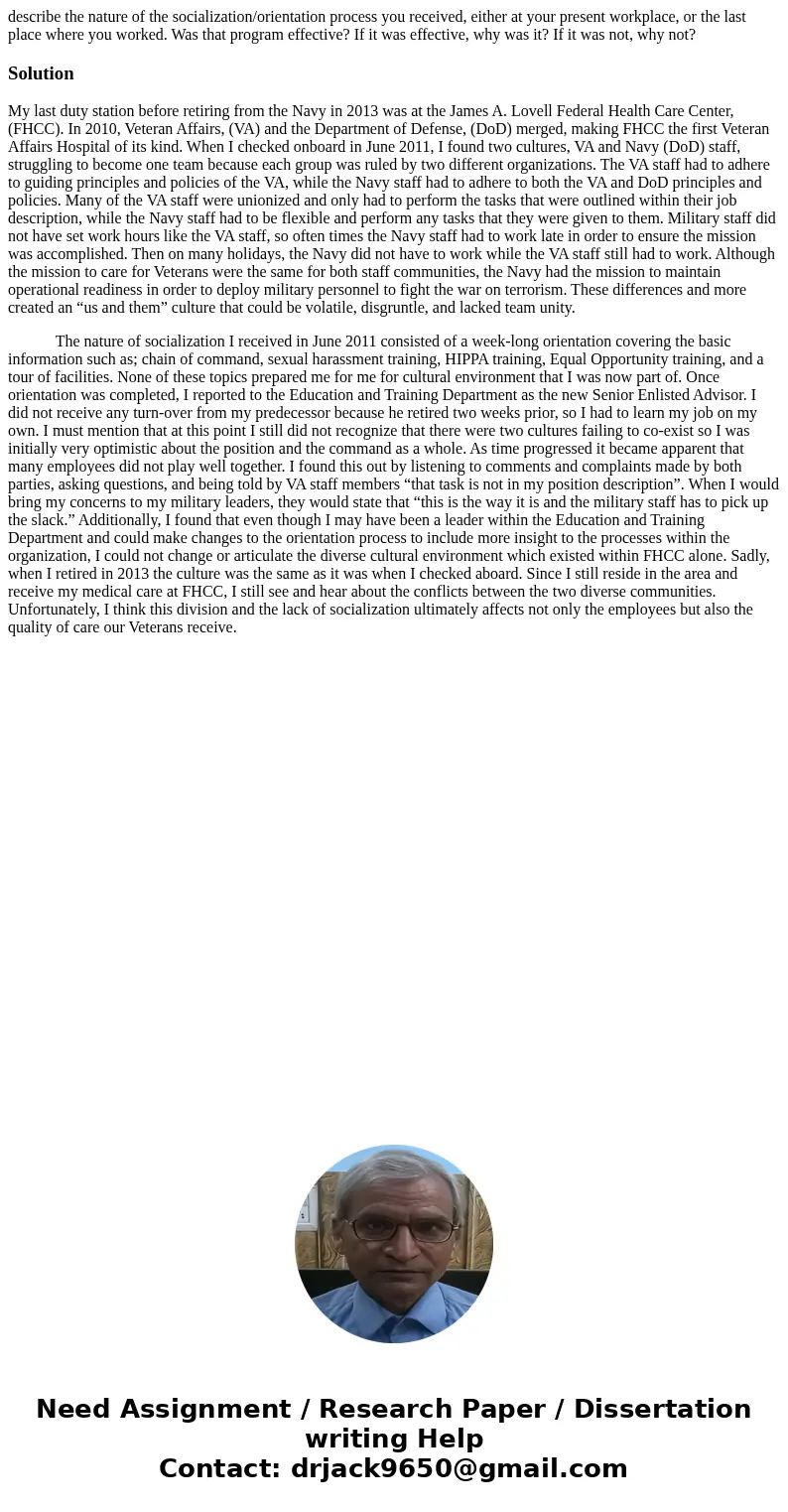describe the nature of the socializationorientation process
describe the nature of the socialization/orientation process you received, either at your present workplace, or the last place where you worked. Was that program effective? If it was effective, why was it? If it was not, why not?
Solution
My last duty station before retiring from the Navy in 2013 was at the James A. Lovell Federal Health Care Center, (FHCC). In 2010, Veteran Affairs, (VA) and the Department of Defense, (DoD) merged, making FHCC the first Veteran Affairs Hospital of its kind. When I checked onboard in June 2011, I found two cultures, VA and Navy (DoD) staff, struggling to become one team because each group was ruled by two different organizations. The VA staff had to adhere to guiding principles and policies of the VA, while the Navy staff had to adhere to both the VA and DoD principles and policies. Many of the VA staff were unionized and only had to perform the tasks that were outlined within their job description, while the Navy staff had to be flexible and perform any tasks that they were given to them. Military staff did not have set work hours like the VA staff, so often times the Navy staff had to work late in order to ensure the mission was accomplished. Then on many holidays, the Navy did not have to work while the VA staff still had to work. Although the mission to care for Veterans were the same for both staff communities, the Navy had the mission to maintain operational readiness in order to deploy military personnel to fight the war on terrorism. These differences and more created an “us and them” culture that could be volatile, disgruntle, and lacked team unity.
The nature of socialization I received in June 2011 consisted of a week-long orientation covering the basic information such as; chain of command, sexual harassment training, HIPPA training, Equal Opportunity training, and a tour of facilities. None of these topics prepared me for me for cultural environment that I was now part of. Once orientation was completed, I reported to the Education and Training Department as the new Senior Enlisted Advisor. I did not receive any turn-over from my predecessor because he retired two weeks prior, so I had to learn my job on my own. I must mention that at this point I still did not recognize that there were two cultures failing to co-exist so I was initially very optimistic about the position and the command as a whole. As time progressed it became apparent that many employees did not play well together. I found this out by listening to comments and complaints made by both parties, asking questions, and being told by VA staff members “that task is not in my position description”. When I would bring my concerns to my military leaders, they would state that “this is the way it is and the military staff has to pick up the slack.” Additionally, I found that even though I may have been a leader within the Education and Training Department and could make changes to the orientation process to include more insight to the processes within the organization, I could not change or articulate the diverse cultural environment which existed within FHCC alone. Sadly, when I retired in 2013 the culture was the same as it was when I checked aboard. Since I still reside in the area and receive my medical care at FHCC, I still see and hear about the conflicts between the two diverse communities. Unfortunately, I think this division and the lack of socialization ultimately affects not only the employees but also the quality of care our Veterans receive.

 Homework Sourse
Homework Sourse